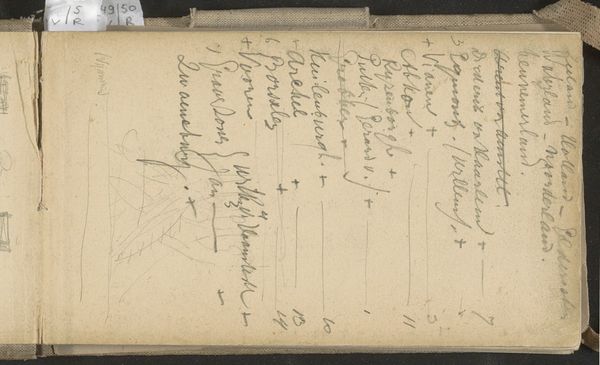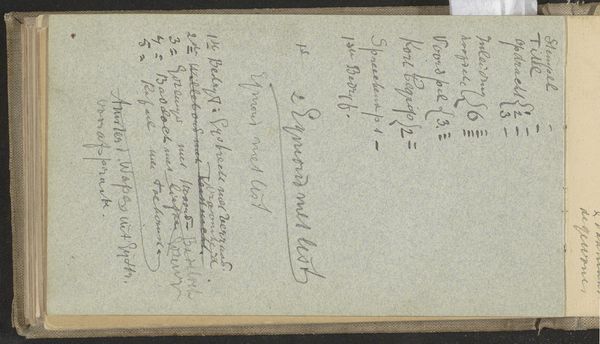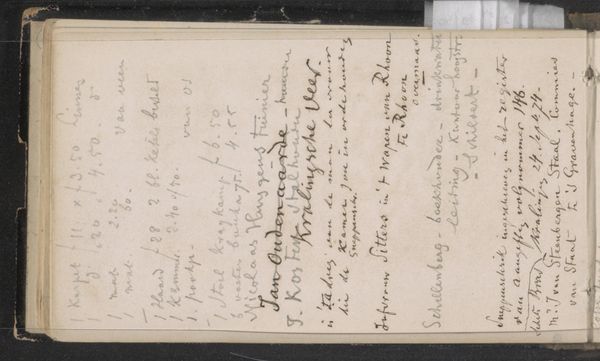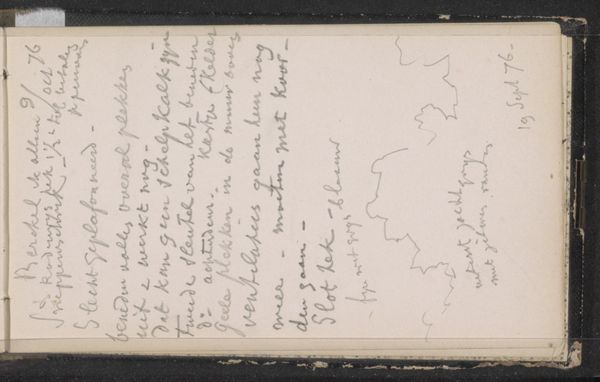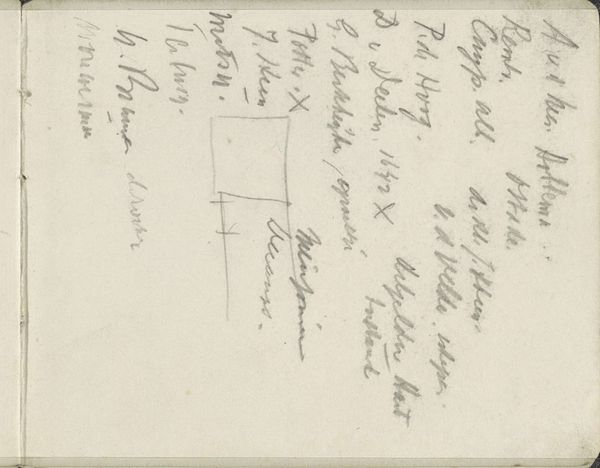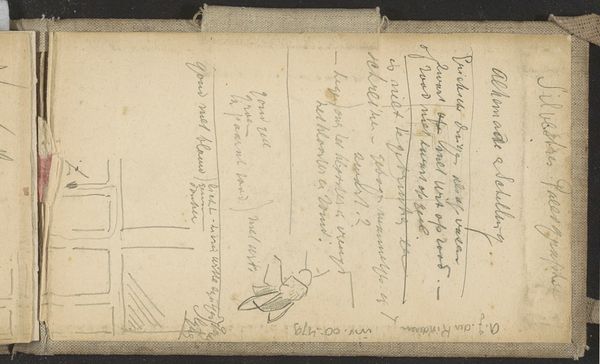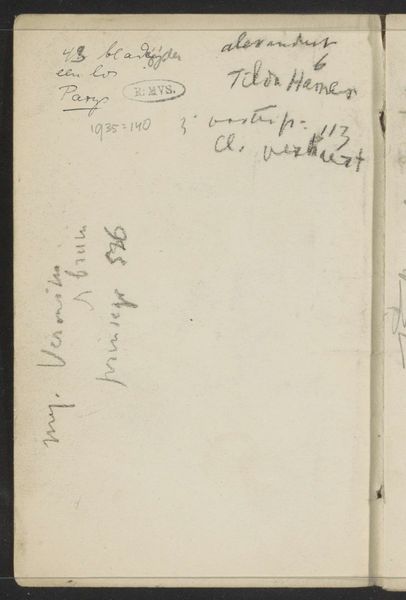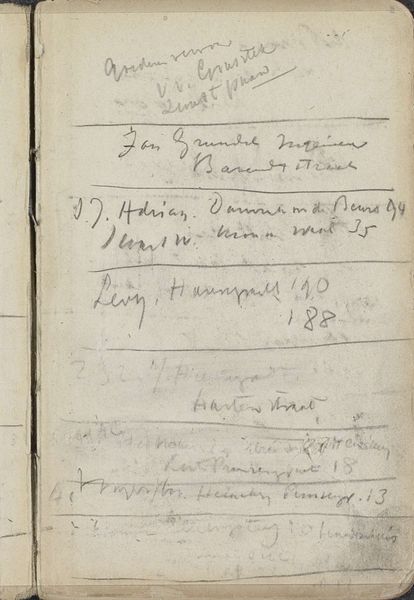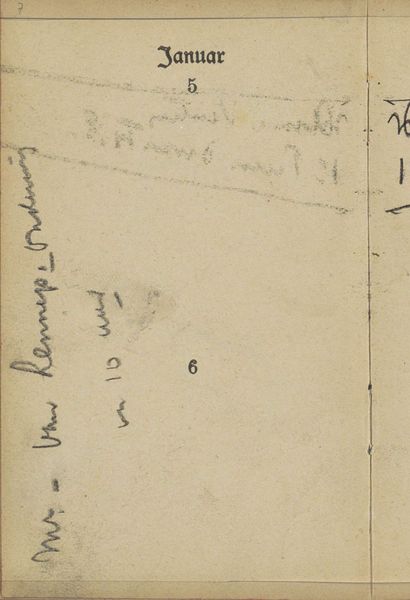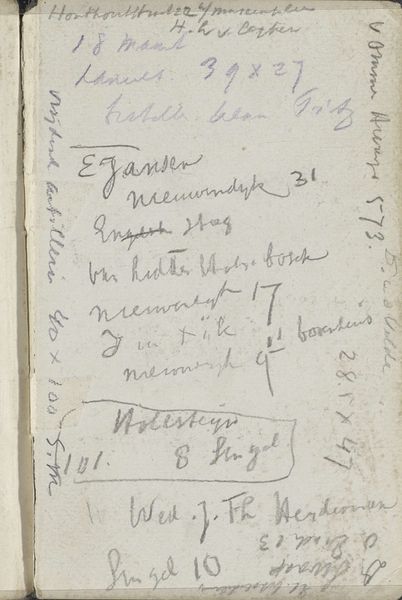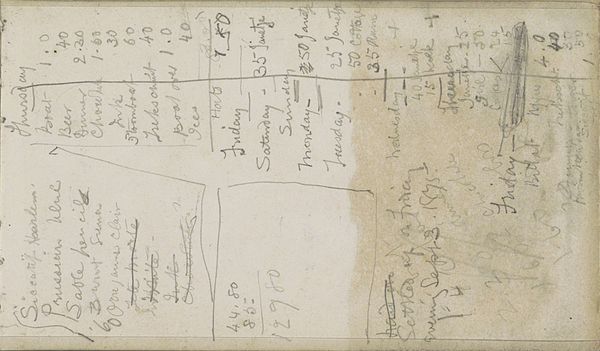
drawing, paper, ink
#
portrait
#
drawing
#
aged paper
#
medieval
#
hand-lettering
#
narrative-art
#
hand drawn type
#
hand lettering
#
paper
#
personal sketchbook
#
ink
#
hand-written
#
hand-drawn typeface
#
intimism
#
fading type
#
stylized text
#
abstraction
#
modernism
#
miniature
#
calligraphy
#
small lettering
Copyright: Rijks Museum: Open Domain
Curator: This sketchbook page, "Notities" by Antoon Derkinderen, created between 1892 and 1901, offers an interesting peek into the artist's working methods, all done in ink on paper. Editor: It does! It looks like a collection of handwritten notes and lists. It’s fascinating to see something so personal and process-oriented, like a glimpse into his mind. What draws your eye when you look at this page? Curator: I'm drawn to the material presence of this page. Notice the aging of the paper. The materials speak volumes about the passage of time and the artist's repeated interactions with the sketchbook. This isn't just about aesthetics; it's about labor and production, challenging that old separation of high art and craft. Editor: So you’re seeing the value in the process, the raw materials of creation itself? Curator: Precisely. Think about where paper and ink came from then. What processes and laborers were involved in producing these simple materials Derkinderen relied upon to make this art? Consider how those industries connected with the societal landscape in the late 19th century. Editor: I never really thought of it that way before. It’s easy to overlook the material origins when we focus solely on the finished artwork. Curator: These aren’t detached notations – they were deliberately made with specific material components and tools in a specific context. How do these observations of materiality inform our understanding of the work's narrative elements? Editor: It makes the process more human and real. Rather than viewing a distant drawing, we see how Derkinderen put thoughts on paper using very humble items, but this in turn also evokes awareness of the unseen processes necessary to even create this “humble” context. Curator: Yes, it democratizes the artistic process, shifting value away from simply admiring an aesthetic outcome to valuing a network of cultural connections, process, labor, and access. This makes one think – what stories do you think this particular work communicates regarding materialism and art? Editor: I hadn't considered all the layers involved in simply making and consuming art.
Comments
No comments
Be the first to comment and join the conversation on the ultimate creative platform.
